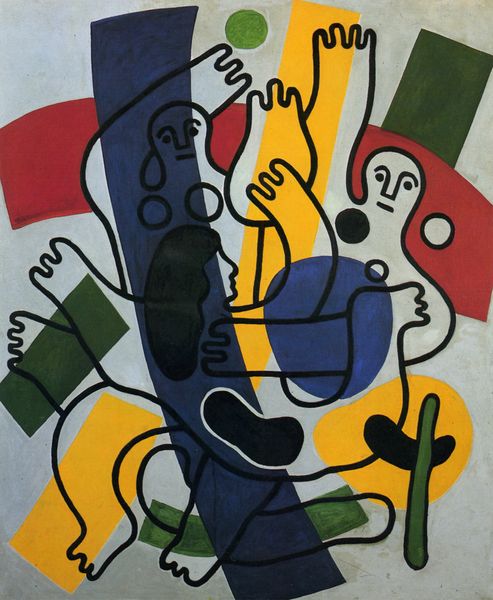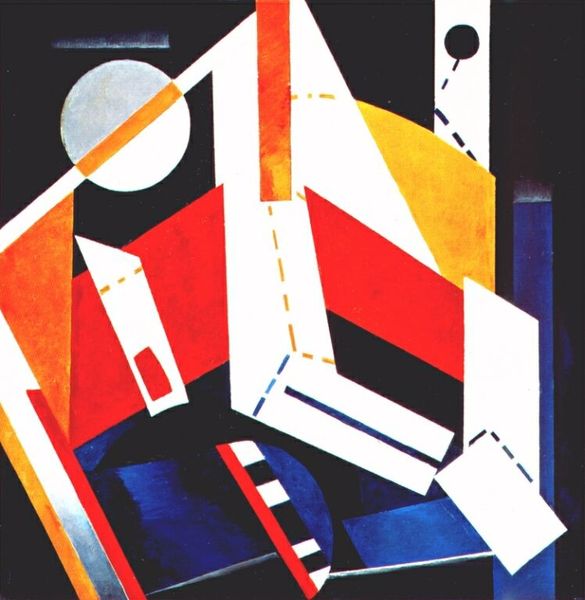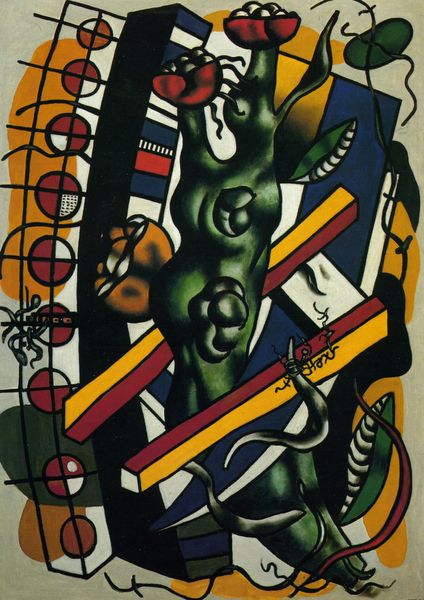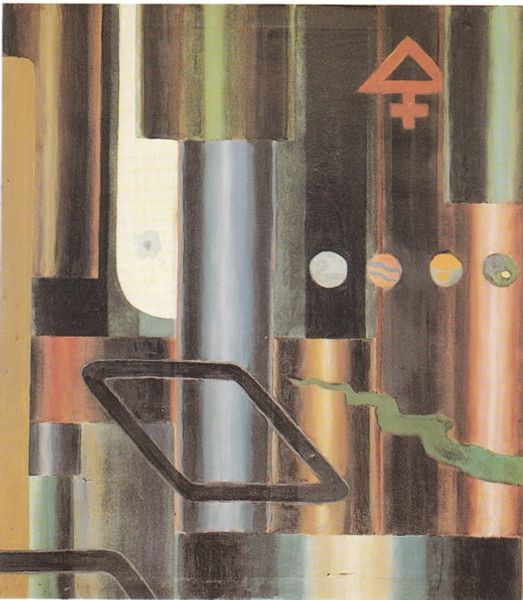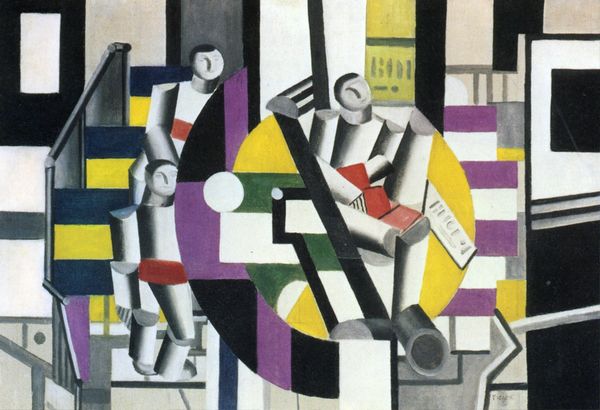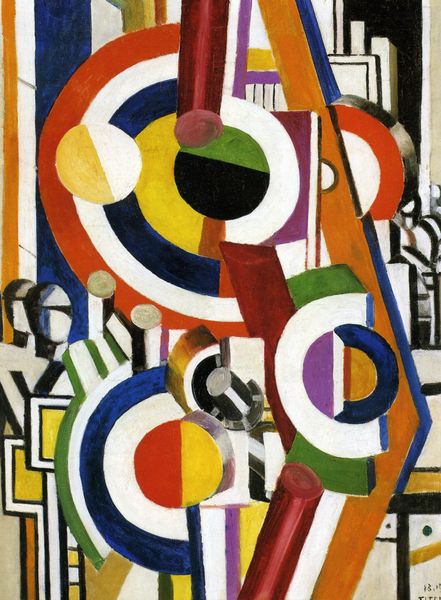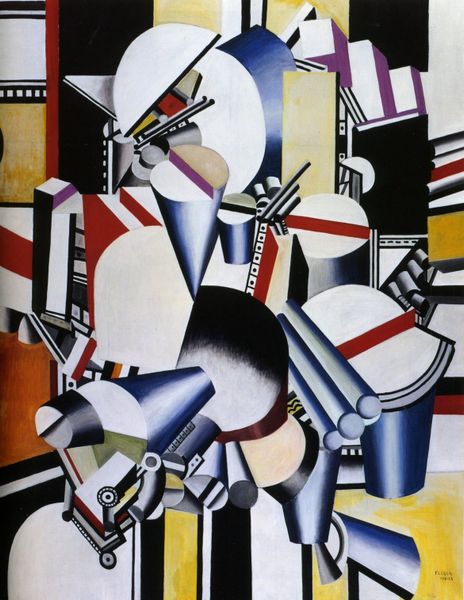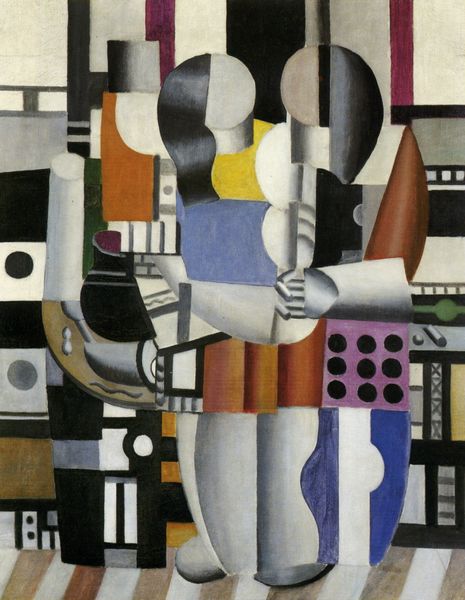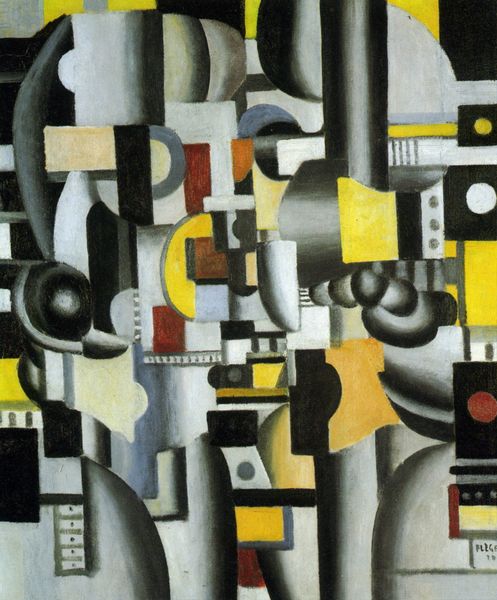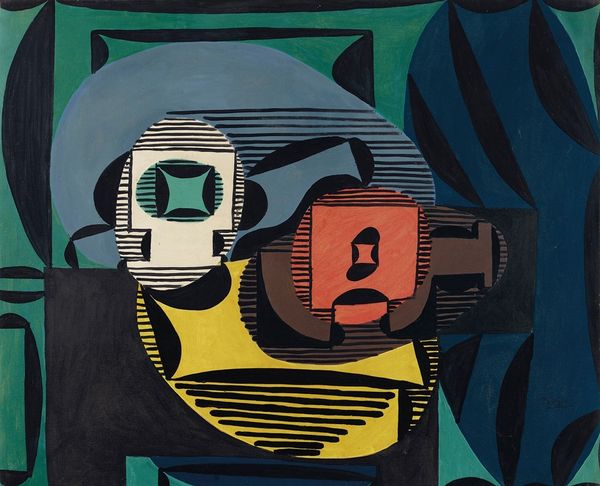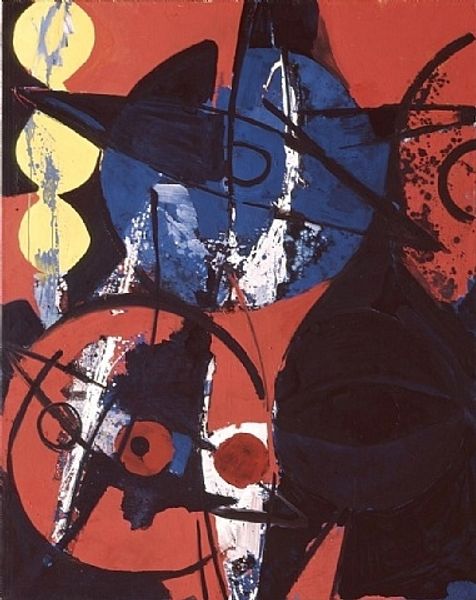
collage, painting
#
portrait
#
cubism
#
collage
#
painting
#
pop art
#
abstraction
#
portrait art
#
modernism
Copyright: Fernand Leger,Fair Use
How do artists reference the past without imitating it? How can history be challenged and reinvented through paint? Let’s explore! 🔎 In his oil painting Mona Lisa with the Keys (1930), the French painter Fernand Léger (1881-1955) creates a dialogue between the modern and the Renaissance. By including an image of the most iconic painting in the entire history of art, Leonardo Da Vinci’s Mona Lisa, Léger captures the prestige and greatness that is associated with the Old Masters. He combines this traditional symbol with geometric shapes and bold, grafitti-esque colours. Léger also employs urban and mechanical imagery, speaking to the industrialism of the 1930s. He juxtaposes the old and the new to critique artistic conventions. Léger’s combination of deconstructed objects is typical of his ‘tubist’ art style. Tubism, or circular cubism, prioritises round and flowing forms. The composition is dominated by various keys on a metallic ring. The keys may possess a symbolic meaning, perhaps suggesting that Léger is unlocking the path to the future. The keys overlap the painting of Mona Lisa – she is pushed into the background, suggesting her insignificance when compared to the artistic innovations of the avant-garde. The image of the Mona Lisa was a common target for modern artists. Take a look at Marcel Duchamp’s depictions of Mona Lisa with a moustache and beard! 🥸 Editor: Lucy Jude Grantham
Comments
No comments
Be the first to comment and join the conversation on the ultimate creative platform.

